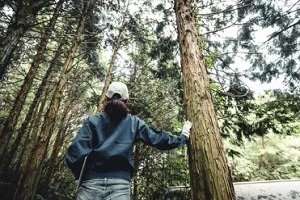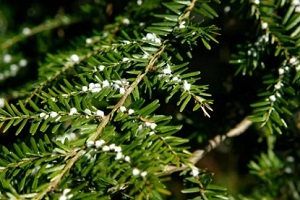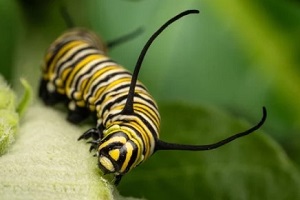 Lumber and forestry businesses rely on natural resources to earn a profit. Notorious as one of the most dangerous industries in the U.S., lumber workers carry comprehensive forestry insurance coverage to defend them against the various risks unique to this line of work.
Lumber and forestry businesses rely on natural resources to earn a profit. Notorious as one of the most dangerous industries in the U.S., lumber workers carry comprehensive forestry insurance coverage to defend them against the various risks unique to this line of work.
While most insurance policies are focused around the equipment, savvy business owners will invest in additional coverage for the timber as a product. This includes protection against the pests and insects that can threaten their lumber, both while it is still growing and after it has been harvested.
Here are five of the most detrimental insects that threaten the future of our forests and how they harm trees.
Borers
In the category of borers, few insects are as notorious as the emerald ash borer beetle. An invasive species first discovered in Michigan in 2002, this pest has spread across the U.S. and can now be found as far away as Oregon.
More than 100 million trees have already fallen victim to this bug, which bores directly into the soft insides of the tree to lay eggs. The larvae then eat the tree from the inside out, leaving holes that kill the tree and also compromise the quality of the lumber. Roughly 99% of trees that have been infested with ash borer beetles will be dead within four years.
Weevils
Not all pests target established trees the way emerald ash borers do. Instead, weevils focus on the soft and moist new growths of a tree, such as the twigs and sprouting buds. This can result in unevenly shaped or ragged timber that is not suitable for all applications.
The most common weevil culprits are the Pales weevil and white pine weevil. Pales weevils in particular can cause the deaths of up to 80% of new seedlings, which may threaten the livelihood of renewable timber sources that are recovering after a harvest.
Adelgids
 Many forestry companies rely on visible signs of a pest infestation to determine if their timber tract has been impacted; however, not all pests leave evidence. Adelgids are a piercing insect variety that cannot often be seen without a magnifying glass.
Many forestry companies rely on visible signs of a pest infestation to determine if their timber tract has been impacted; however, not all pests leave evidence. Adelgids are a piercing insect variety that cannot often be seen without a magnifying glass.
Trees may not appear sick, only slightly discolored or thin. Adelgids get their nutrients by leaching them directly from the tree’s tissues. When the tree converts sunlight into carbohydrates during photosynthesis, adelgids will steal the carbohydrates, starving the tree to death.
The hemlock wooly adelgid and the balsam wooly adelgid are the two most prevalent varieties, and many varieties are capable of reproducing with only one member. This means that extermination plans cannot miss even a single adelgid or the timber will still be at risk.
Beetles
While the ash borer threatens trees by laying its eggs within the interior of the tree, other types of insects only go as far as the bark—to equally devastating effect. Beneath the bark lies the phloem, the fragile cells that are responsible for transporting carbohydrates, water and other nutrients from the roots and leaves of a tree to other locations.
Southern pine beetles, black turpentine beetles and Ips pine engravers bore into the bark and damage the phloem beneath. While trees can temporarily route their nutrients around infested areas, these beetles can “girdle” a tree by making a complete circle and completely cutting off the phloem pathways.
Trees that have been infested with bark borers cannot typically be fixed and will die. The only evidence left behind are small holes in the bark or networks of pathways if the bark is pulled off.
Caterpillars
 The final type of pest that threatens the future of our forests are called defoliators. These insects feast on the foliage (needles or leaves) at the tips of a tree’s branches. Because trees rely on photosynthesis through their leaves to create nutrients and carbohydrates, bugs that eat their chlorophyll-filled leaves will quickly kill a tree. Moths are the most common type of defoliators, but it is their larvae that causes the most harm.
The final type of pest that threatens the future of our forests are called defoliators. These insects feast on the foliage (needles or leaves) at the tips of a tree’s branches. Because trees rely on photosynthesis through their leaves to create nutrients and carbohydrates, bugs that eat their chlorophyll-filled leaves will quickly kill a tree. Moths are the most common type of defoliators, but it is their larvae that causes the most harm.
Caterpillars devour as much greenery as they can to prepare for their cocoon stage. The forest tent and eastern tent species are the most ubiquitous alongside the larvae of the spongy moth. Outbreaks of spongy moths can leave dozens or hundreds of fuzzy caterpillars on a single tree.
Protect Your Assets with Comprehensive Forestry Insurance
Pests are a force of nature that can threaten the livelihood of a forestry business, and as such, they should be included in a risk prevention plan. The experts at Burton & Company can help your business plan for pests and insects that threaten your timber harvest. Contact Burton & company to learn more about our tailored forestry insurance coverage or to ask any questions that you may have.

